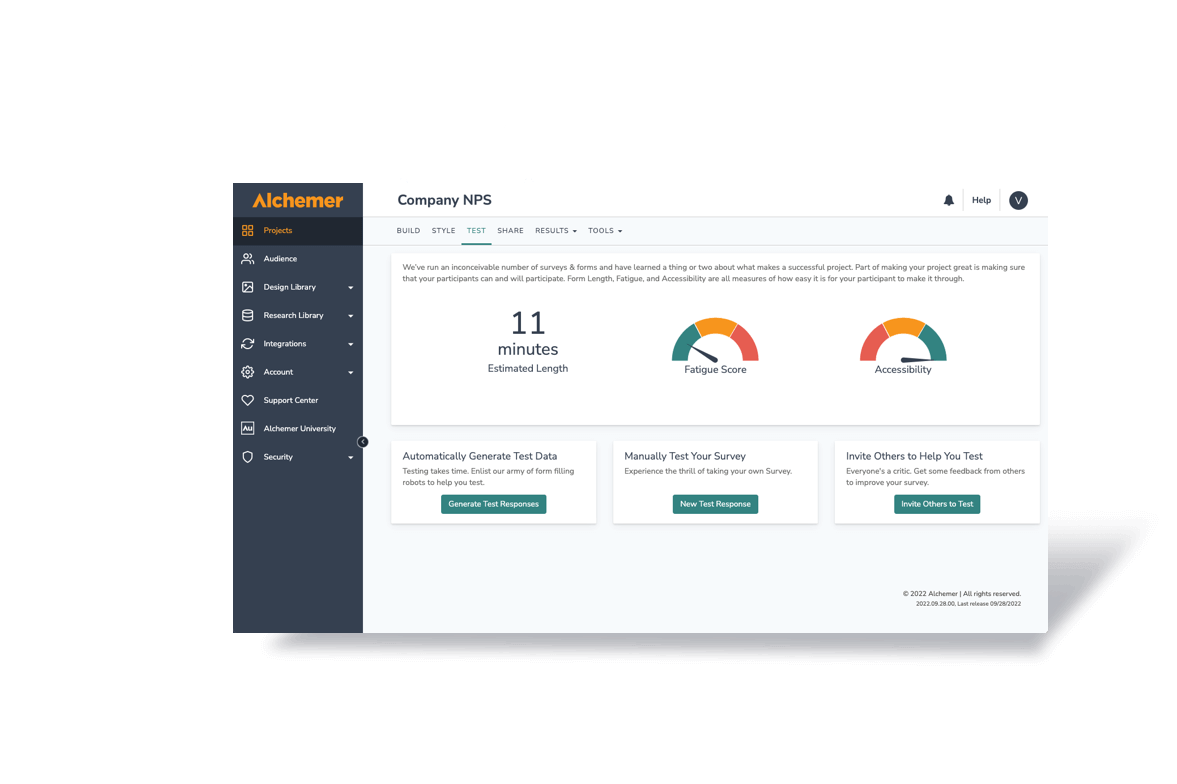Using Survey Data to Perform Demographic Segmentation
Demographic segmentation is a cornerstone of modern marketing. It allows businesses to divide a broad market into more specific, manageable groups. These groups use demographic characteristics like age, gender, income, and education as their basis.
Understanding how to perform demographic segmentation is essential for your business. Knowing why it is critical can greatly enhance the effectiveness of your marketing efforts. By using this approach, you can better target your audience and achieve more impactful results.
What is Demographic Segmentation?
In business, demographic segmentation is when an organization uses data about its customers’ demographic characteristics to create more tailored marketing strategies. By identifying and targeting demographic segments, businesses can focus on groups of people with similar demographic traits. This approach ensures that their marketing efforts resonate with the right audience. As a result, they can achieve better engagement and conversion rates.
So, what is demographic segmentation, exactly? It’s a method for breaking down your market into smaller segments. This process uses factors like age, gender, income, education level, and other demographic segmentation variables. Each group, or demographic segment, shares common characteristics that can influence their purchasing behavior.
For instance, a luxury car brand may target high-income individuals. In contrast, a budget smartphone manufacturer might focus on younger or less affluent buyers. In both cases, the company employs demographic segmentation in its marketing strategy. This approach helps identify which groups are most likely to be interested in their products or services.
Why is Demographic Segmentation Important?
The value of demographic segmentation lies in its ability to make marketing more precise. When businesses analyze demographic data, they gain insights into their customers. This understanding allows them to tailor messages and offers to meet the specific needs of different groups. This leads to more efficient marketing strategies that waste fewer resources and have a higher chance of success.
The Role of Surveys in Demographic Segmentation
Surveys are one of the most accurate and effective tools for collecting demographic data. Surveys enable businesses to ask direct questions about customers’ age, gender, income, education, and other relevant factors. This approach makes it easier to identify different demographic segments.
For example, if a company wants to target a new product to college students, a survey can be very helpful. It can collect detailed information about this demographic segment. This includes data on average income, spending habits, and the types of products they are most interested in. This data can then inform marketing strategies to ensure the product appeals directly to the right audience.
While demographical segmentation is essential for marketers, it’s crucial to approach survey questions with care. Asking overly personal or sensitive questions can alienate customers. Therefore, businesses need to strike a balance between gathering useful demographic data and respecting respondents’ privacy.
Common Demographic Segmentation Variables
Several key demographic segmentation variables are frequently used in marketing to break down and analyze customer groups. Each of these variables provides valuable insights into customer behaviors and preferences.
1. Age
Age is one of the most common variables used in demographic segmentation. Different age groups have distinct needs, preferences, and buying behaviors. For instance, younger consumers may be more tech-savvy and attracted to innovative products, while older individuals might prioritize reliability and customer service.
By segmenting customers by age, businesses can tailor their messaging and products to resonate with specific groups. For example, a company that sells high-end luxury watches might target older, affluent customers. In contrast, a brand that sells smartwatches could focus on younger, tech-oriented consumers.
2. Gender
Society is increasingly moving away from strict gender roles. However, gender remains a relevant factor in certain areas of marketing. Marketers often base their messaging and packaging strategies on gender for products like cosmetics and clothing. They also consider gender when developing pricing strategies for personal care items.
For example, a company that sells men’s grooming products might emphasize simplicity and performance. In contrast, a brand focused on women’s beauty products could highlight themes of self-care and empowerment. However, it’s important to avoid reinforcing stereotypes, as many consumers prefer more inclusive, gender-neutral marketing.
3. Income
Income is a crucial factor in market segmentation demographic strategies because it directly impacts consumers’ purchasing power. Higher-income individuals are more likely to buy luxury products, while lower-income consumers might prioritize cost and value.
For example, a car manufacturer might create distinct marketing campaigns for its high-end models. These campaigns would target affluent customers. Additionally, the manufacturer could develop separate campaigns for budget-friendly vehicles aimed at lower-income buyers.
By segmenting customers based on income, companies can effectively reach the right audience. This strategy allows them to deliver the appropriate message and product offering tailored to that audience.
4. Education
Education level is another key variable in demographic segmentation. This factor is particularly important for products or services that require a certain level of knowledge or expertise to appreciate fully. Customers with higher levels of education tend to be more informed and discerning, which can influence their buying decisions.
For example, a company that sells organic or health-conscious food products may target consumers with higher education levels. These consumers are more likely to be aware of the benefits of a healthy diet. In contrast, a mass-market food brand may focus on price-conscious consumers who have less education. This brand offers affordable and convenient options to cater to their needs.
5. Family Life Cycle
The family life cycle is a concept in demographic segmentation. It examines the stages families go through, starting from single individuals to married couples with children. This concept also includes empty nesters and retirees. Each stage of the family life cycle comes with different needs, preferences, and spending habits.
For example, newlyweds might be interested in purchasing home goods, furniture, and kitchen appliances. In contrast, families with young children may prioritize products related to childcare, education, and entertainment. Meanwhile, empty nesters and retirees might focus on travel, leisure, and health-related products.
By understanding where customers are in the family life cycle, businesses can tailor their marketing strategies. This knowledge allows them to create targeted campaigns that address the specific needs and preferences of different customer segments.
Advantages of Demographic Segmentation
Demographic segmentation offers numerous benefits to businesses looking to improve their marketing effectiveness. Here are some key advantages:
1. Cost-Effectiveness
One of the primary reasons businesses use demographic segmentation is its cost-effectiveness. Demographic and segmentation strategies enable businesses to concentrate their resources effectively. By focusing on the groups most likely to purchase their products, they avoid casting a wide net and hoping for the best.
By targeting specific demographic segments, companies can create more personalized marketing campaigns, which tend to have higher conversion rates. This approach reduces wasted marketing spend and increases return on investment (ROI).
2. Improved Customer Targeting
By understanding the unique characteristics of different demographic segments, businesses can tailor their messaging effectively. This approach allows them to create offers that appeal directly to these specific groups. For example, a fitness brand targeting young professionals might emphasize convenience and efficiency in its messaging. In contrast, the same brand could highlight health benefits and wellness when addressing older customers.
Personalized marketing is more likely to resonate with customers, leading to better engagement and higher conversion rates. Demographic segmentation allows businesses to craft campaigns that speak directly to their target audience. By focusing on specific needs and desires, companies can create more personalized and effective marketing efforts.
3. Data-Driven Decision Making
Demographic segmentation in marketing relies on data, which means businesses can make more informed decisions about their marketing strategies. By analyzing demographic data, companies can identify trends and patterns in customer behavior. This insight enables them to adjust their strategies based on real-world information.
For example, if a company observes that a specific age group responds more positively to their marketing efforts, they can take action based on this insight. They might adjust their strategies to focus more on that age group in future campaigns. They can allocate more resources to specifically target that group in future campaigns. This data-driven approach reduces guesswork and ensures that marketing efforts are as effective as possible.
Drawbacks of Demographic Segmentation
While demographic segmentation has many advantages, it is not without its challenges. Here are some potential drawbacks to consider:
1. Competition
Because demographic segmentation is widely used, competitors are often targeting the same groups of customers. This can lead to increased competition, as businesses vie for the attention of similar demographic segments.
2. Assumptions About Customer Behavior
Demographic segmentation relies on certain assumptions about how different groups of people behave. For example, businesses might assume that all high-income individuals are interested in luxury products. However, this assumption isn’t always accurate.
Some customers may prioritize value and cost over brand prestige. This can be true even if they have the financial means to purchase more expensive items.
Using Surveys to Inform Demographic Segmentation
Demographic segmentation is an invaluable tool for businesses looking to improve their marketing efforts. By understanding the characteristics and preferences of different customer groups, companies can create more personalized and effective marketing strategies. When combined with survey data, demographic and segmentation efforts offer valuable insights into customer behavior. These insights lead to improved targeting and, ultimately, a higher return on investment (ROI).
For further information, Alchemer has put together this guide on How to Write Better Demographic Survey Questions. The guide even provides thorough examples!Demographic Survey Questions. The guide even provides thorough examples!
You should now have all of the information you need to begin performing demographic segmentation that will benefit your organization’s marketing efforts and overall understanding of customer profiles.




